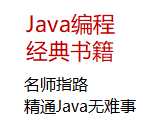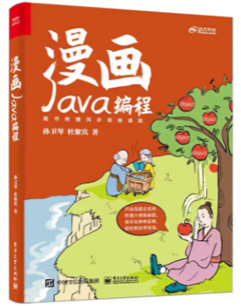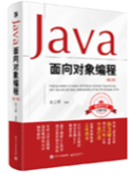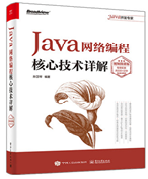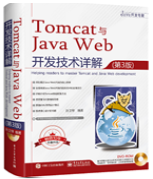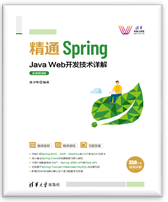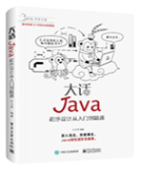|
|
@SessionAttributes 只能作用在类上,作用是将指定的Model中的键值对添加至session中,方便在下一次请求中使用。
简单示例
目标是通过 @SessionAttributes 注解将Model中attrName为 "user","age","name" 的值添加至 session 中 1 @Controller
2 @RequestMapping("/testSessionAttribute")
3 @SessionAttributes(value = {"user","age","name"})
4 public class TestSessionAttributeController {
5
6 @ModelAttribute("user")
7 public User addUser(){
8 User user = new User();
9 user.setName("James");
10 user.setAge(29);
11 return user;
12 }
13
14 @RequestMapping("/testHandler")
15 public String testHandler(Model model, String age, String name){
16 model.addAttribute("age",age);
17 model.addAttribute("name",name);
18 System.out.println(age);
19 System.out.println(name);
20 return "result";
21 }
22 } |
对应的jsp代码如下:
1 <body>
2 ${sessionScope.user.age}
3 ${sessionScope.user.name}
4 <br/>
5 ${sessionScope.age}
6 ${sessionScope.name}
7 </body> |
通过实例可以得出一下结论:
不论是利用@ModelAttribute添加至model的数据,还是手动添加至model的数据,均遵循 @SessionAttributes 的规则
清除@SessionAttributes向session中添加的值
如果需要清除通过@SessionAttribute添加至 session 中的数据,则需要在controller 的 handler method中添加 SessionStatus参数,在方法体中调用SessionStatus#setComplete。
需要注意的是,此时清除的只是该Controller通过@SessionAttribute添加至session的数据(当然,如果不同controller的@SessionAttribute拥有相同的值,则也会清除)
@Controller
@RequestMapping("/testSessionAttribute")
@SessionAttributes(value = {"user","age","name"})
public class TestSessionAttributeController {
..........................
@RequestMapping("/removeSessionAttributes")
public String removeSessionAttributes(SessionStatus sessionStatus){
sessionStatus.setComplete();
return "result";
}
} |
通过@ModelAttributes和@SessionAttributes共同添加至session中的数据,只会添加一次
在没用使用SessionStatus清除过之前,通过@ModelAttributes和@SessionAttributes共同添加至session中的数据并不会更新,如下例:
1 @Controller
2 @RequestMapping("/testSessionAttribute")
3 @SessionAttributes(value = {"user","age","name"})
4 public class TestSessionAttributeController {
5
6 public static int age = 29;
7 @ModelAttribute("user")
8 public User addUser(){
9 User user = new User();
10 user.setName("James");
11 user.setAge(age++);
12 return user;
13 }
14
15 @RequestMapping("/testHandler")
16 public String testHandler(Model model, String age, String name){
17 model.addAttribute("age",age);
18 model.addAttribute("name",name);
19 System.out.println(age);
20 System.out.println(name);
21 return "result";
22 }
23
24 } |
JSP代码
1 <body>
2 ${sessionScope.user.age}
3 ${sessionScope.user.name}
4 <br/>
5 ${sessionScope.age}
6 ${sessionScope.name}
7 </body> |
第一次请求:http://localhost:8080/testSessionAttribute/testHandler.action?name=James&age=29
结果:
29 James
29 James
第二次请求:http://localhost:8080/testSessionAttribute/testHandler.action?name=James&age=30
29 James
30 James
原因是,在org.springframework.web.bind.annotation.support.HandlerMethodInvoker#invokeHandlerMethod中进行了如下操作:
1 public final Object invokeHandlerMethod(Method handlerMethod, Object handler,
2 NativeWebRequest webRequest, ExtendedModelMap implicitModel) throws Exception {
3
4 Method handlerMethodToInvoke = BridgeMethodResolver.findBridgedMethod(handlerMethod);
5 try {
6 boolean debug = logger.isDebugEnabled();
7 for (String attrName : this.methodResolver.getActualSessionAttributeNames()) {
8 Object attrValue = this.sessionAttributeStore.retrieveAttribute(webRequest, attrName);
9 if (attrValue != null) {
10 implicitModel.addAttribute(attrName, attrValue);
11 }
12 }
13 for (Method attributeMethod : this.methodResolver.getModelAttributeMethods()) {
14 Method attributeMethodToInvoke = BridgeMethodResolver.findBridgedMethod(attributeMethod);
15 Object[] args = resolveHandlerArguments(attributeMethodToInvoke, handler, webRequest, implicitModel);
16 if (debug) {
17 logger.debug("Invoking model attribute method: " + attributeMethodToInvoke);
18 }
19 String attrName = AnnotationUtils.findAnnotation(attributeMethod, ModelAttribute.class).value();
20 if (!"".equals(attrName) && implicitModel.containsAttribute(attrName)) {
21 continue;
22 }
23 ReflectionUtils.makeAccessible(attributeMethodToInvoke);
24 Object attrValue = attributeMethodToInvoke.invoke(handler, args);
25 if ("".equals(attrName)) {
26 Class<?> resolvedType = GenericTypeResolver.resolveReturnType(attributeMethodToInvoke, handler.getClass());
27 attrName = Conventions.getVariableNameForReturnType(attributeMethodToInvoke, resolvedType, attrValue);
28 }
29 if (!implicitModel.containsAttribute(attrName)) {
30 implicitModel.addAttribute(attrName, attrValue);
31 }
32 }
33 Object[] args = resolveHandlerArguments(handlerMethodToInvoke, handler, webRequest, implicitModel);
34 if (debug) {
35 logger.debug("Invoking request handler method: " + handlerMethodToInvoke);
36 }
37 ReflectionUtils.makeAccessible(handlerMethodToInvoke);
38 return handlerMethodToInvoke.invoke(handler, args);
39 }
40 catch (IllegalStateException ex) {
41 // Internal assertion failed (e.g. invalid signature):
42 // throw exception with full handler method context...
43 throw new HandlerMethodInvocationException(handlerMethodToInvoke, ex);
44 }
45 catch (InvocationTargetException ex) {
46 // User-defined @ModelAttribute/@InitBinder/@RequestMapping method threw an exception...
47 ReflectionUtils.rethrowException(ex.getTargetException());
48 return null;
49 }
50 } |
如8-11行所示,在执行被@ModelAttributes注解的方法前,会将上一次通过@SessionAttributes添加至session中的数据添加添加至model中;
第20-22行,在执行被@ModelAttributes注解的方法前,springMVC会判断model中是否已经包含了@ModelAttributes给出的attrName,如果包含,则被@ModelAttributes注解的方法则不再执行
程序猿的技术大观园:www.javathinker.net
|
|

